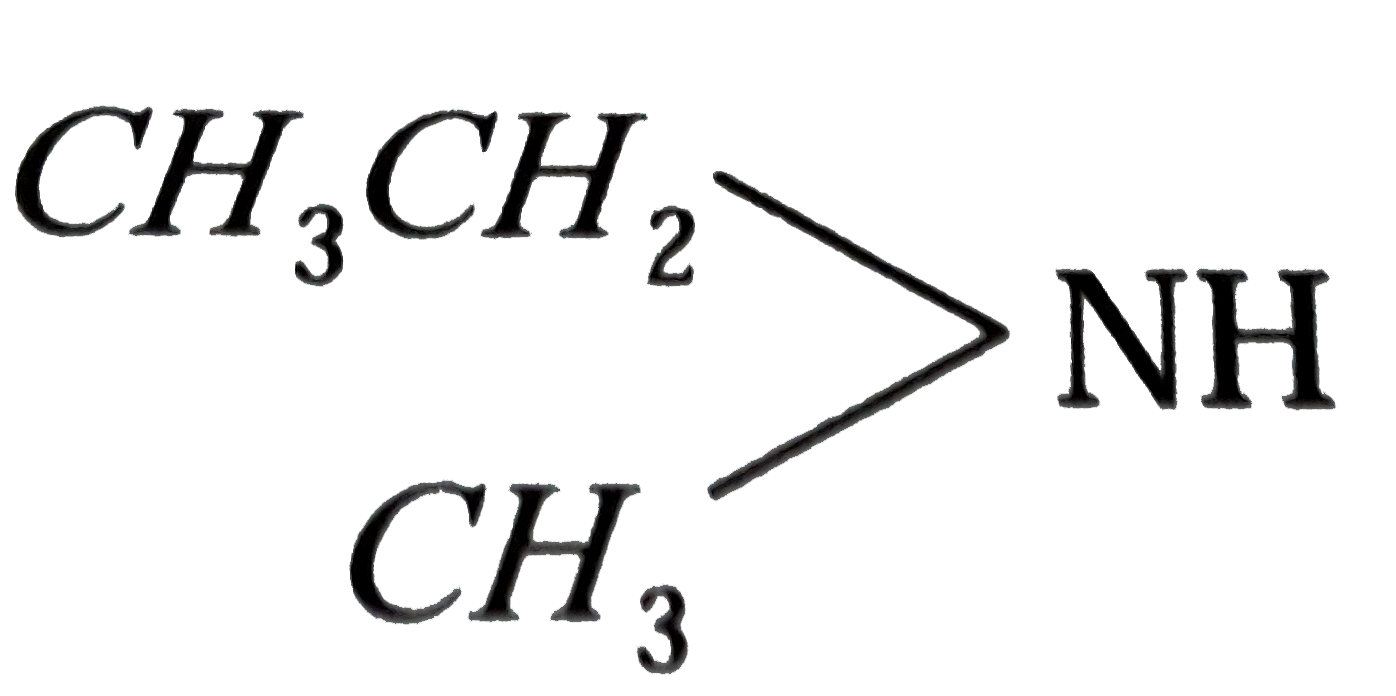The following reaction takes place through CH3−O−CH2−CH3+HI to CH3−I+CH3−CH3−CH2−OH
SN1 mechanism
SN2 mechanism
SN1 in first step and E2 in second step
SN2 in first step and E1 in second step
The correct Answer is:B
To solve the problem involving the reaction of ether with HI, we can break down the process step by step.
Step 1: Identify the Reactants
The reactants in the reaction are:
- Ether: CH3−O−CH2−CH3 (ethyl methyl ether)
- Hydroiodic acid: HI
Step 2: Protonation of Ether
When the ether reacts with HI, the ether oxygen atom gets protonated by the hydrogen ion (H⁺) from HI. This step forms a protonated ether intermediate, which is more reactive.
Reaction:
CH3−O−CH2−CH3+H+→CH3−O+−CH2−CH3
Step 3: Formation of Nucleophile
The protonated ether is now a good leaving group. The bond between the oxygen and the ethyl group (CH₂-CH₃) can break, leading to the formation of a methyl cation and a nucleophile (iodide ion, I⁻) from HI.
Reaction:
CH3−O+−CH2−CH3→CH+3+CH2−CH3−OH
Step 4: Nucleophilic Attack
The iodide ion (I⁻) acts as a nucleophile and attacks the less hindered methyl cation (CH₃⁺). This is an SN2 reaction, which is favored due to the less steric hindrance around the methyl group.
Reaction:
CH+3+I−→CH3−I
Step 5: Final Products
The final products of the reaction are:
- Methyl iodide: CH3−I
- Ethanol: CH3−CH2−CH2−OH
Overall Reaction:
CH3−O−CH2−CH3+HI→CH3−I+CH3−CH2−CH2−OH
Conclusion
The reaction proceeds through an SN2 mechanism, where the iodide ion attacks the methyl cation, leading to the formation of methyl iodide and ethanol.
---
The reactants in the reaction are:
- Ether: CH3−O−CH2−CH3 (ethyl methyl ether)
- Hydroiodic acid: HI
When the ether reacts with HI, the ether oxygen atom gets protonated by the hydrogen ion (H⁺) from HI. This step forms a protonated ether intermediate, which is more reactive.
CH3−O−CH2−CH3+H+→CH3−O+−CH2−CH3
The protonated ether is now a good leaving group. The bond between the oxygen and the ethyl group (CH₂-CH₃) can break, leading to the formation of a methyl cation and a nucleophile (iodide ion, I⁻) from HI.
CH3−O+−CH2−CH3→CH+3+CH2−CH3−OH
The iodide ion (I⁻) acts as a nucleophile and attacks the less hindered methyl cation (CH₃⁺). This is an SN2 reaction, which is favored due to the less steric hindrance around the methyl group.
CH+3+I−→CH3−I
The final products of the reaction are:
- Methyl iodide: CH3−I
- Ethanol: CH3−CH2−CH2−OH
CH3−O−CH2−CH3+HI→CH3−I+CH3−CH2−CH2−OH
The reaction proceeds through an SN2 mechanism, where the iodide ion attacks the methyl cation, leading to the formation of methyl iodide and ethanol.
Topper's Solved these Questions
Similar Questions
Knowledge Check
Which of the following should be most volatile?
I) CH3CH2CH2NH2II)(CH3)3NIII)

IV) CH3CH2CH3AIIBIVCIDIII
IUPAC name is CH3−CH(CH2−CH3)−CH(CH2−CH2−CH3)−CH2−CH3
View SolutionWrite the IUPAC name of
CH3−CH2−C(OH)(CH2−CH2−CH3)−CH2−CH3
View SolutionCH3−CH2−CH2−CH2−OH→CH3−CH2−CH=CH2+H2O
View SolutionCompare rate of nucleophillic addition reaction
(a) CH3−CO−CH2−CH3
(b) CH3−CH(CH3)−CO−CH(CH3)CH3
(c)CH3−CHO
View SolutionWrite the IUPAC name of
CH3−CH2−CH2−CH(O−CH2−CH3)−CH3
View SolutionGive the IUPAC name of the compound
CH3−CH2−CH(CH3)−CH2−O−CH2−CH3
View SolutionWrite the IUPAC name of
CH3−CH(CH3)−CH2−CH(CH3)−CH(CH3)−CH2−CH3
View Solution
